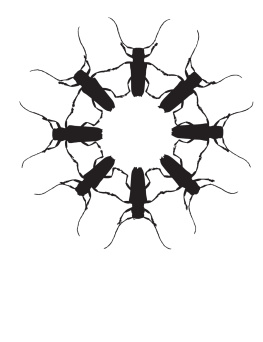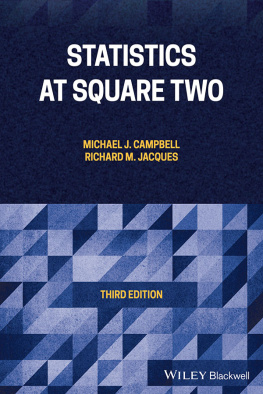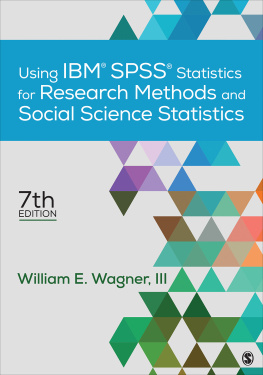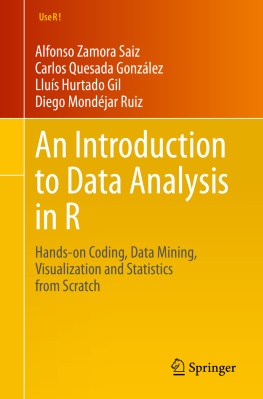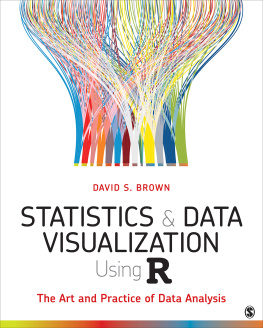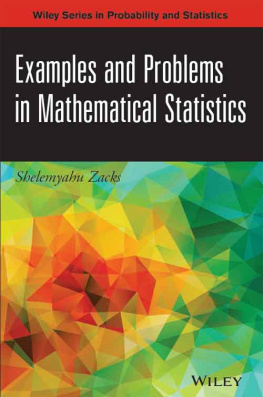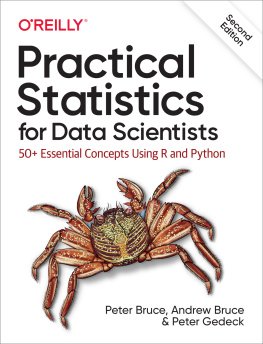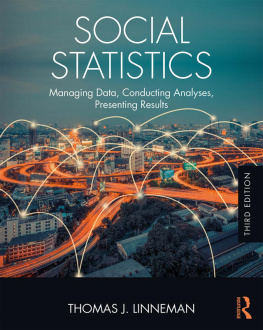Contents
Landmarks
List of Illustrations
List of Tables
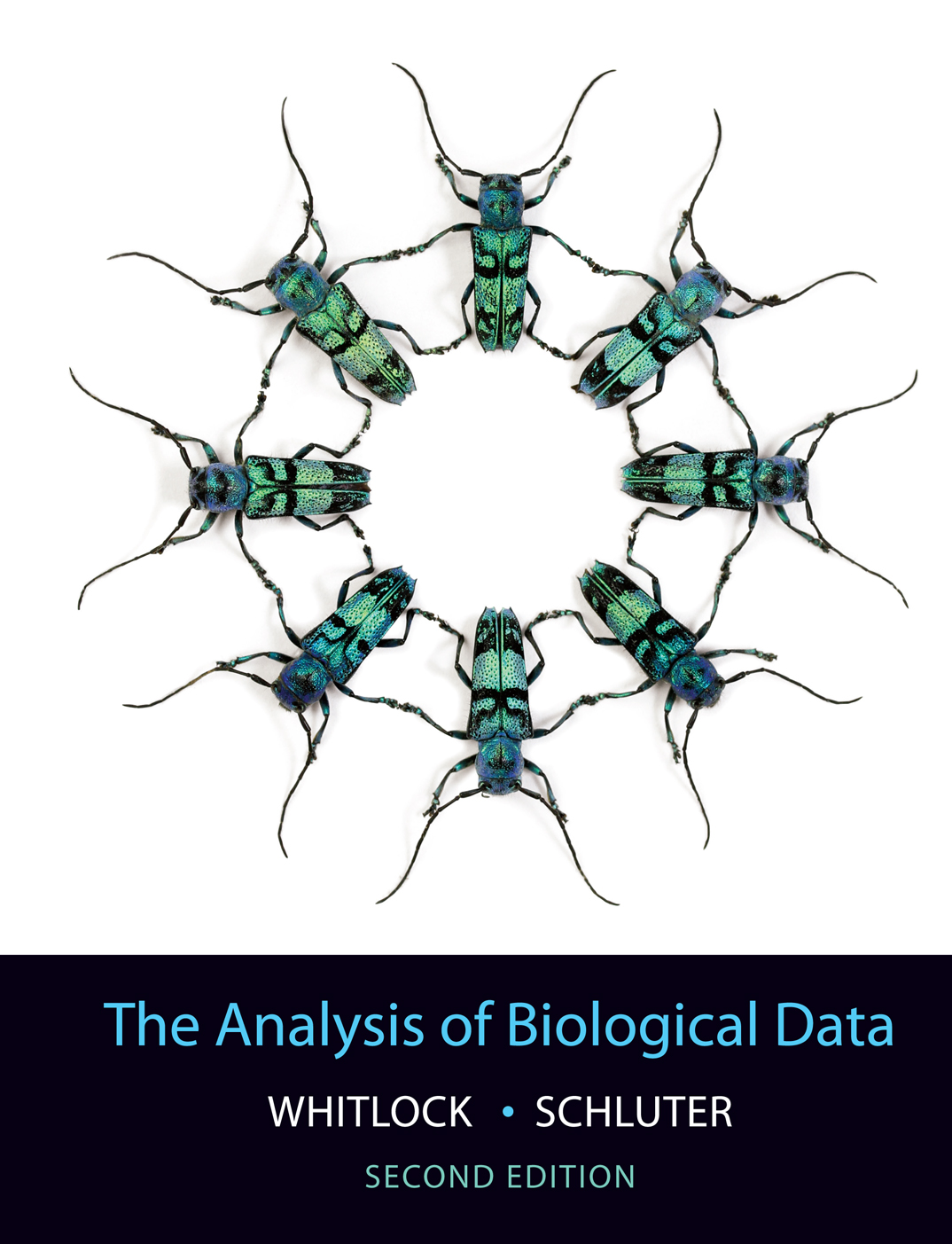
The Analysis of Biological Data
The Analysis of Biological Data
Second Edition
Michael C. Whitlock and Dolph Schluter


The Analysis of Biological Data, Second Edition
Publisher: Ben Roberts
Proofreader: Kathi Townes
Art Studio: Lineworks, Inc.; Lori Heckelman
Cover Designer: Emiko Paul
Photo Researcher: Jennifer Simmons, Lumina Datamatics, Inc.
Permissions Assistant: Michael McCarthy
Compositor: Kristina Elliott at TECHarts
2015 by W. H. Freeman and Company
Reproduction or translation of any part of this work beyond that permitted by Section 107 or 108 of the 1976 United States Copyright Act without permission of the copyright owner is unlawful. Requests for permission or further information should be addressed to the W. H. Freeman and Company Rights and Permissions Department. Grateful acknowledgment for third-party permissions, which have been granted for material in this title not owned by Macmillan Learning, appears in the Photo Credits section, which represents an extension of this copyright page.
Cover Photo: www.pheromonegallery.com
ISBN: 978-1-319156-71-8
Library of Congress Cataloging-in-Publication Data
Whitlock, Michael, author.
The analysis of biological data / Michael C. Whitlock and Dolph Schluter. -- Second edition.
pages cm
Includes bibliographical references and index.
ISBN 978-1-319156-71-8
1. Biometry--Textbooks. I. Schluter, Dolph, author. II. Title.
QH323.5.W48 2015
570.15195--dc23
2014010300
10987654
W. H. Freeman and Company
One New York Plaza
Suite 4500
10004-1562
New York, NY
www.macmillanhighered.com
To Sally and Wilson, Andrea and Maggie
Contents in brief
PART 1INTRODUCTION TO STATISTICS
PART 2PROPORTIONS AND FREQUENCIES
PART 3COMPARING NUMERICAL VALUES
PART 4REGRESSION AND CORRELATION
PART 5MODERN STATISTICAL METHODS
Contents
PART 1INTRODUCTION TO STATISTICS
PART 2PROPORTIONS AND FREQUENCIES
PART 3:COMPARING NUMERICAL VALUES
PART 4REGRESSION AND CORRELATION
PART 5MODERN STATISTICAL METHODS
Preface
Modern biologists need the powerful tools of data analysis. As a result, an increasing number of universities offer, or even require, a basic data analysis course for all their biology and premedical students. We have been teaching such a course at the University of British Columbia for the last two decades. Over this period, we have sought a textbook that covered the material we needed in an introductory course at just the right level. We found that most texts were too technical and encyclopedic, or else they didnt go far enough, missing methods that were crucial to the practice of modern biology and medicine. We wanted a book that had a strong emphasis on intuitive understanding to convey meaning, rather than an overreliance on formulas. We wanted to teach by example, and the examples needed to be interesting. Most importantly, we needed a biology book, addressing topics important to biologists and health care providers handling real data.
We couldnt find the book that we needed, so we decided to write this one to fill the gap. We include several unusual features that we have discovered to be helpful for effectively reaching our audience:
Interesting biology examples. Our teaching has shown us that biology students learn data analysis best in the context of interesting examples drawn from the medical and biological literature. Statistics is a means to an end, a tool to learn about the human and natural world. By emphasizing what we can learn about the science, the power and value of statistics becomes plain. Plus, its just more fun for everyone concerned.
Every chapter has several biological or medical examples of key concepts, and each example is prefaced by a substantial description of the biological setting. The examples are illustrated with photos of the real organisms, so that students can look at what theyre learning about. The emphasis on real and interesting examples carries into the problem sets; for each chapter, there are dozens of questions based on real data about biological and medical issues. In this Second Edition, we have added approximately 200 new problems. These include a new type of problem, called Calculation Practice, that takes the student step-by-step through the important procedures described in the chapter. The corresponding answers are provided at the back of the book so that the students can check their success at each step. Two or three such problems are at the start of most of the chapter problem sets. Weve also added three new sections of review problems (after ) to allow cumulative review of the important concepts up to that point in the book.
Intuitive explanations of key concepts. Statistical reasoning requires a lot of new ways of thinking. Students can get lost in the barrage of new jargon and multitudinous tests. We have found that starting from an intuitive foundation, away from all the details, is extremely valuable. We take an intuitive approach to basic questions: Whats a good sample? Whats a confidence interval? Why do an experiment? The first several chapters establish this basic knowledge, and the rest of the book builds on it.
Practical data analysis. As its title suggests, this book focuses on data rather than the mathematical foundations of statistics. We teach how to make good graphical displays, and we emphasize that a good graph is the beginning point of any good data analysis. We give equal time to estimation and hypothesis testing, and we avoid treating the P-value as an end in itself. The book does not demand a knowledge of mathematics beyond simple algebra. We focus on practicality over nuance, on biological usefulness over theoretical hand wringing. We not only teach the right way of doing something but also highlight some of the pitfalls that might be encountered.
We demonstrate how to carry out the calculations for most methods so that the steps are not mysterious to students. At the same time, we know that a computer will be available for most calculations. Hence, we focus on the concepts of biological data analysis and how statistics can help extract scientific insight from data. With the power of modern computers at hand, the challenge in analyzing data becomes knowing what method to use and why.).
Practical experimental design. A biologist cannot do good statisticsor good sciencewithout a practical understanding of experimental design. Unlike most books, our book covers basic topics in experimental design, such as controls, randomization, pseudoreplication, and blocking, and we do it in a practical, intuitive way.
Up to date on the basics. Believe it or not, the best confidence interval for the proportion is not the one you probably learned as an undergraduate. Nonparametric statistics do not effectively test for differences in means (or medians, for that matter) without some fairly strong assumptions that we normally hear little about. For these and many other topics, we have updated the coverage of basic, everyday topics in statistics.

